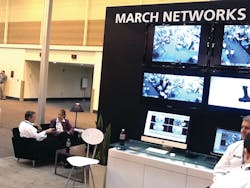Looking to Advanced Security Applications
Deploying mobile surveillance systems on fleet vehicles has proven an invaluable asset and allows transit agencies to play a vital role in protecting our communities, while protecting their own people and assets.
Today’s challenge, however, is how to effectively adapt to the growing demands within secure city initiatives. By integrating mobile systems, enabling proactive monitoring, rapid incident response and better decision-making based on real-time information, the challenge can be met. With adaptive solutions that provide a secured, predefined or situational user access gateway, transit agencies can take a commanding position and meet the challenge.
The result is enabling public/private access to their controlled gateway, and the reward is that transit agency is assured a commanding position in a secure city initiative. After all, there are roughly 30,000 combined bus stops within Chicago, D.C. and Baltimore alone every weekday, which provides previously unattainable coverage with non-static boundaries for a secure city.
The challenge is vast, but achievable today. There are possible future monetary benefits –outside user cooperation ensures transit agencies receive funding for operations; ensuring mobile assets are where they are schedule to be every day.
Keith Winchester, director, North American mobile solutions, March Networks, recently spoke to this topic, "Moving Beyond Mobile CCTV with Advanced Security Applications" for the Transit Technology and International Showcase at the American Public Transportation Association's Expo in New Orleans, La.
When looking at secured cities, Winchester stressed, "Mobile assets are the missing piece.
The technology exists to give community partners a gateway to outside access to real-time video so many transit agencies have on their vehicles. "It gives people like EMS the opportunity to see inside the bus in those critical 5 minutes," he stresed.
Keith Winchester, North America Mobile Solutions - Director, March Networks Corp., [email protected]
